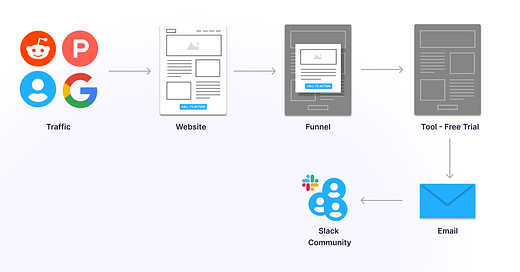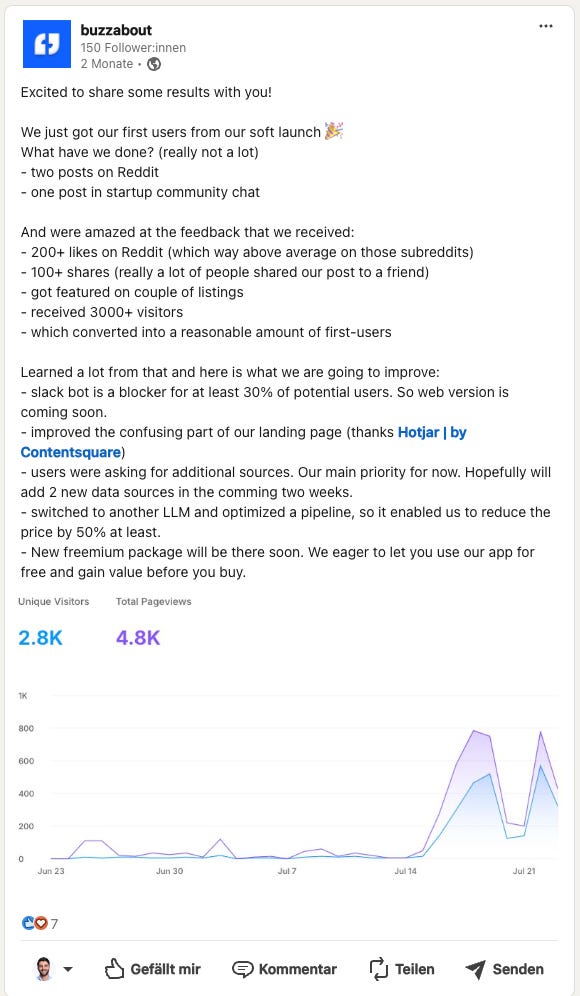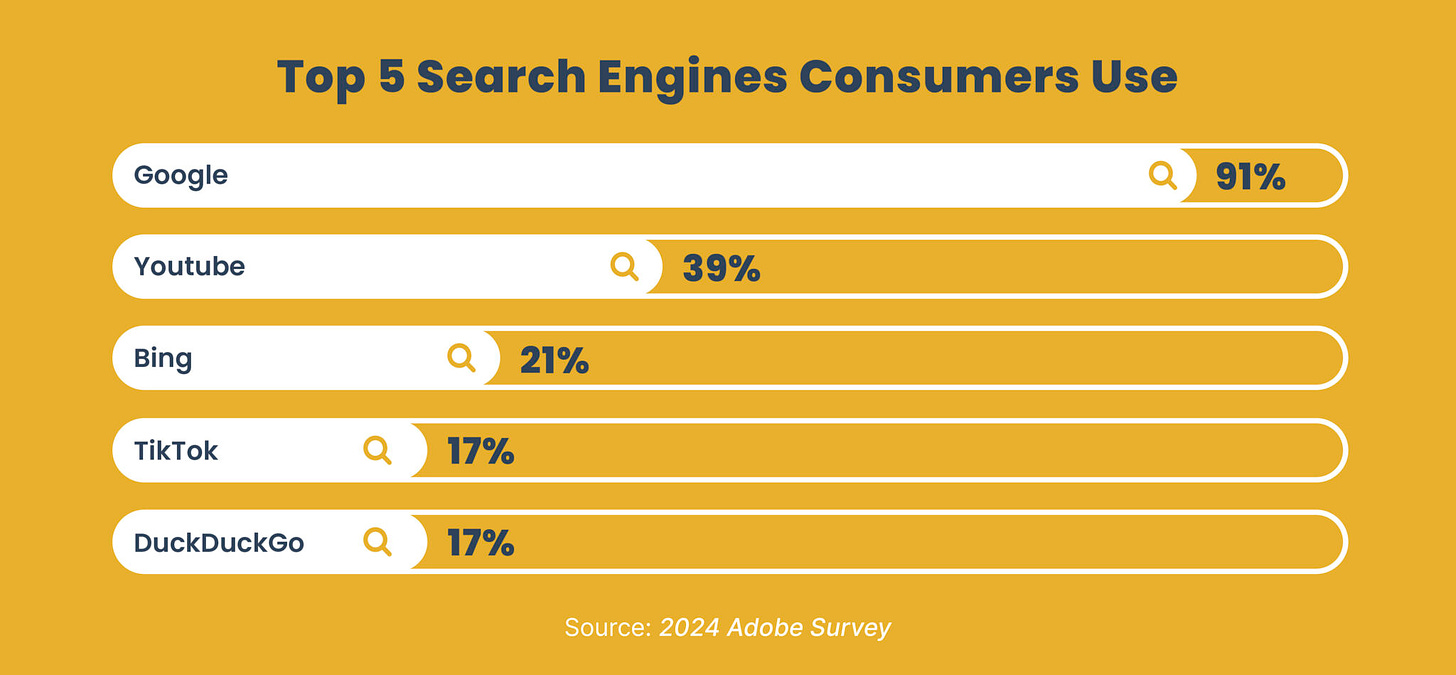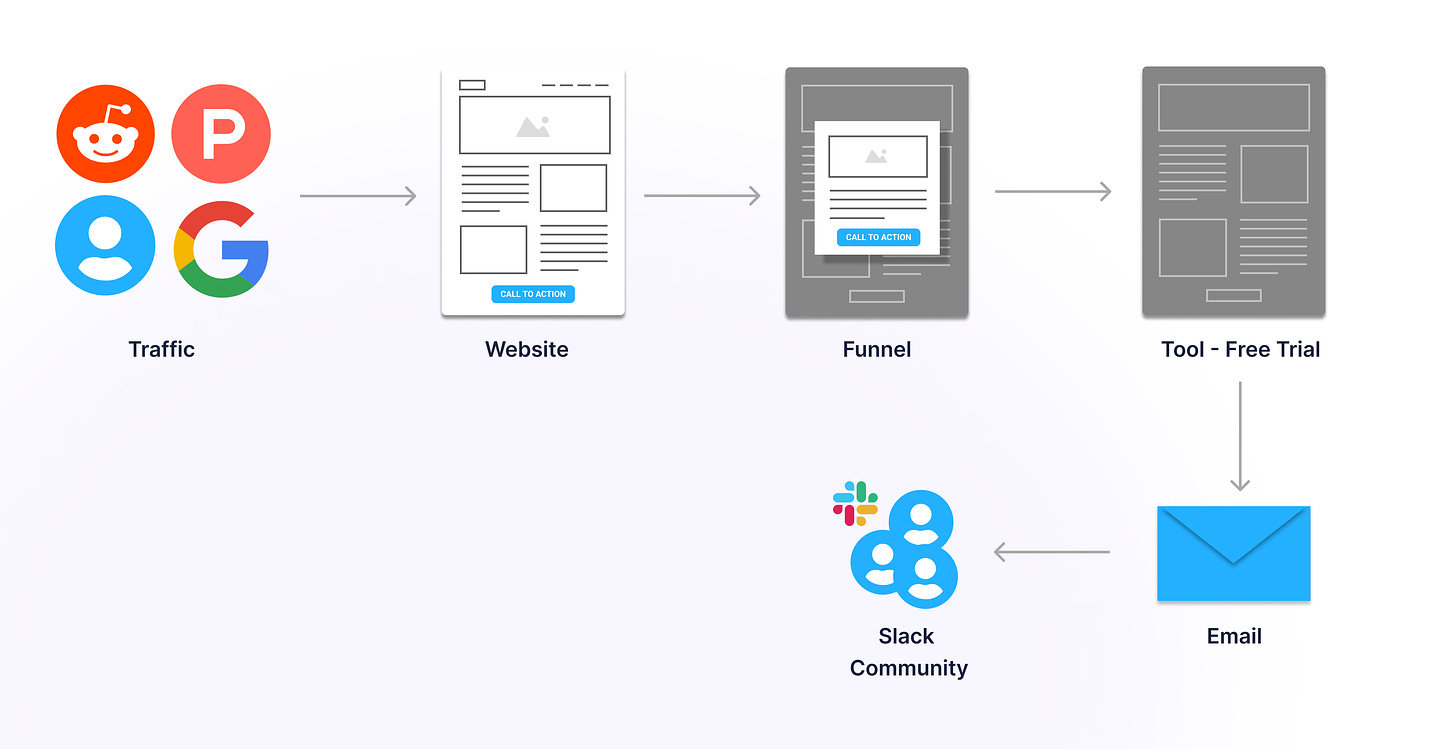This Startup Generated 3,000 Clicks with 2 Reddit Posts
Dive with me into this case study of buzzabout.ai - and see why it is brilliantly how this startup captures traffic.
Hey Growth Builders,
Welcome to the first issue! In this articles we’re breaking down growth funnels and strategies that early-stage startups are using to acquire customers.
Why early-stage startups you might ask?
Because we’ve all seen growth hacks and success stories from companies like Amazon, Dropbox, Airbnb, and others, but the real standouts are early-stage startups that need to be creative to win customers in today's world.
So to get inspired, use the tactics we break down here yourself and discover how to stand out on a zero budget, just subscribe here:
PS: At the end of each article, I give you a summary of the key takeaways you can use to grow your startup.
Buzzabout.ai – Capturing Demand Like a Pro
Today, we’re looking at buzzabout.ai, a startup developing an AI-powered tool for target group insights that analyzes social media discussions, like those on Reddit.
With this tool, you can quickly identify the problems and needs of your target audience.
Buzzabout started as a Slack bot but quickly pivoted to a web platform, thanks to user feedback that helped shape its development.
Now, as a web platform, buzzabout uses a solid approach to draw users into its funnel.
But let’s start from the top.
Making People Aware - The Traffic Sources
Traffic Source: Social Media
A couple of months ago, buzzabout posted themselves how they started and this gives a good indication what the top of the funnel looks like.
By posting on Reddit and in startup communities, they garnered significant positive feedback from just a few posts.
After diving in the reddit posts myself, I saw that they have postet the following in different subreddits - which worked quite well for the startup:
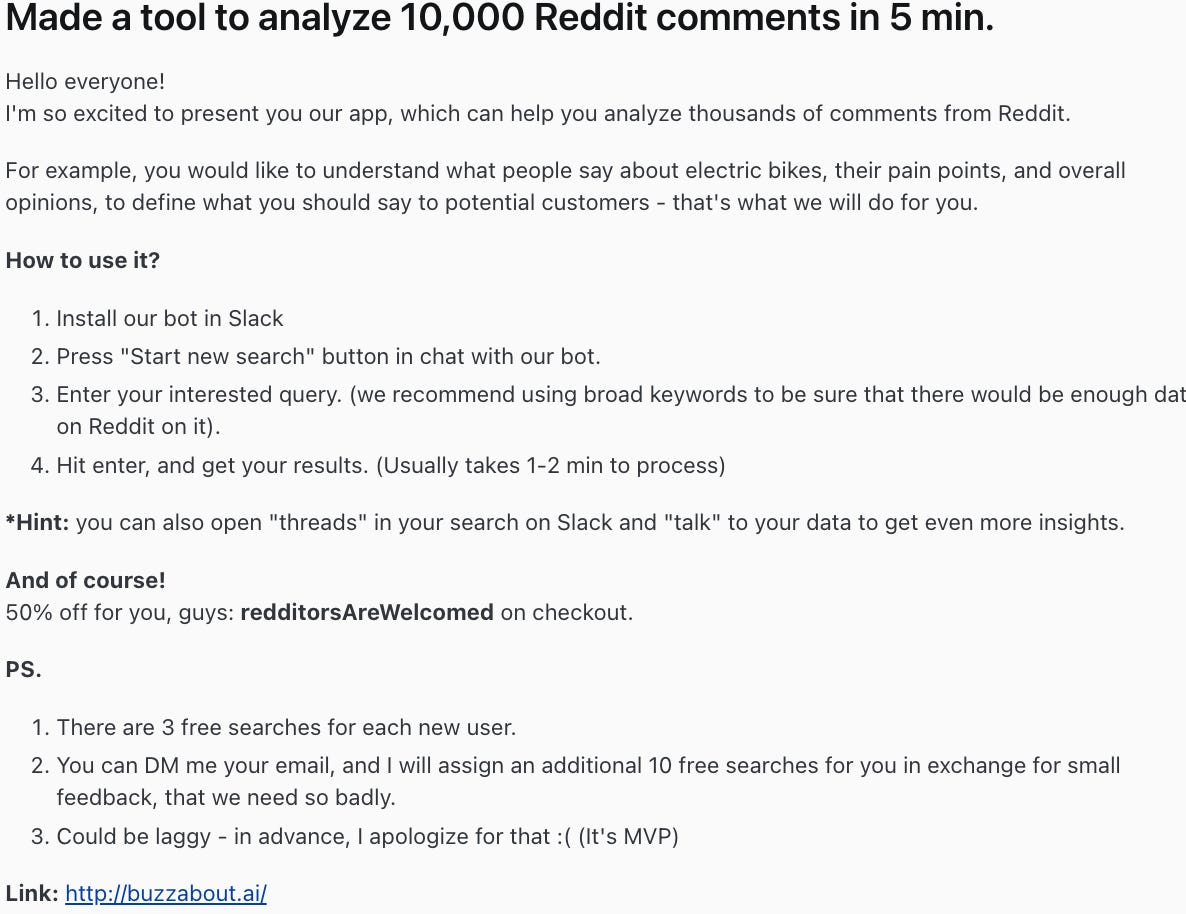
Looking further at the the responses it seems like people love the solution.
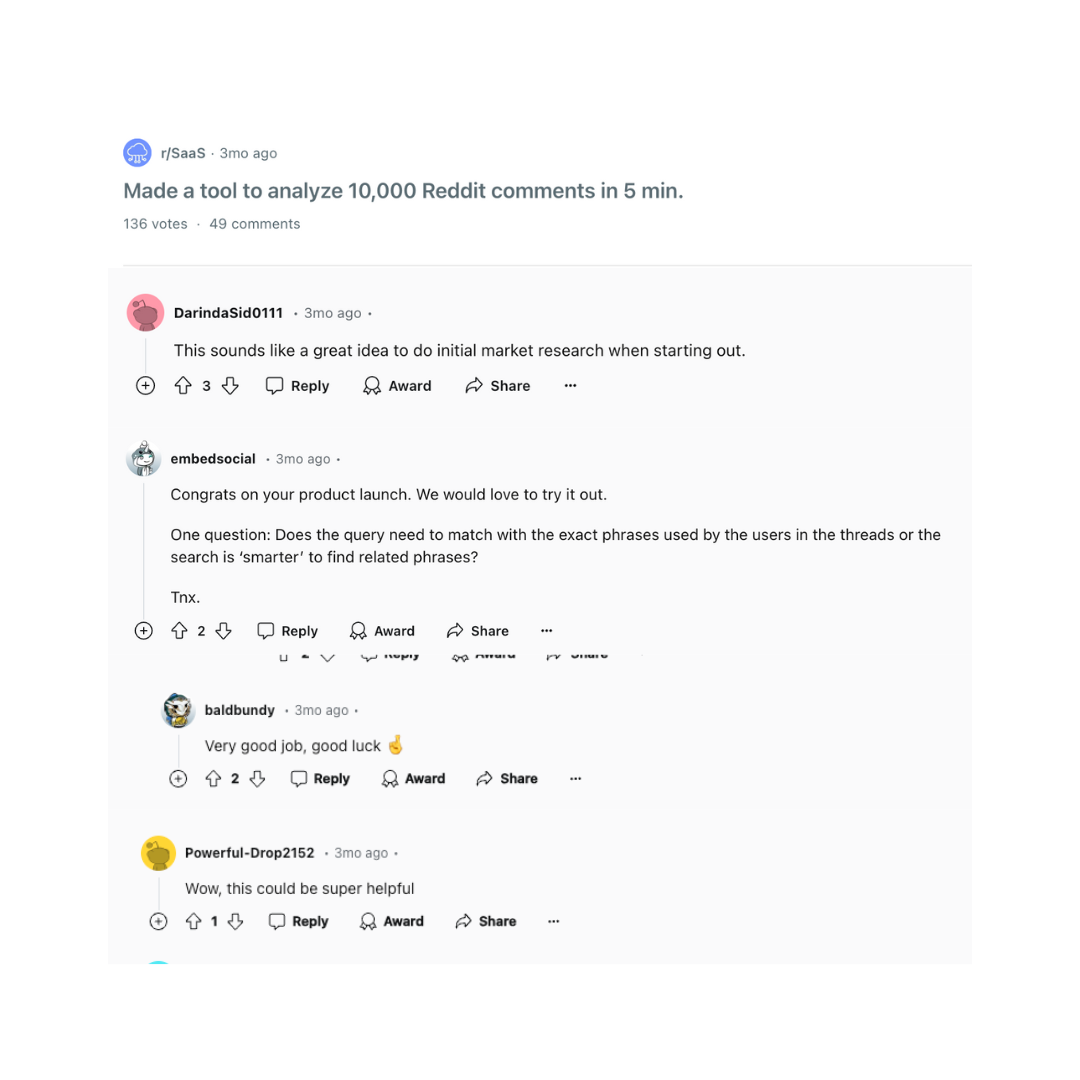
💡 In the early stages, it’s crucial to get feedback from the market ASAP — buzzabout did this well, instead of spending months building in the dark they posted it on Reddit and got valuable feedback.
Beyond two Reddit posts and posts in communities, buzzabout also used a couple of LinkedIn and Twitter posts, though those likely didn’t drive the most traffic.
Traffic Source: SEO & Google
Their backlink structure and SEO efforts were more interesting.
As expected for a new startup, the domain rating and backlink profile isn’t that strong yet (domain rating = popularity of your website):

💡 A domain becomes stronger with more backlinks (links from other websites to yours). A stronger domain makes it easier to rank on Google, which helps outperform competitors in SEO. So, when focusing on SEO, spend some of your time in building backlinks.
Despite its domain rating, buzzabout has earned traffic from list articles like “The Best 240 Research AI Tools”, and several reputable sites have linked back to them.
This is gold, as it will provide a steady stream of traffic over time.
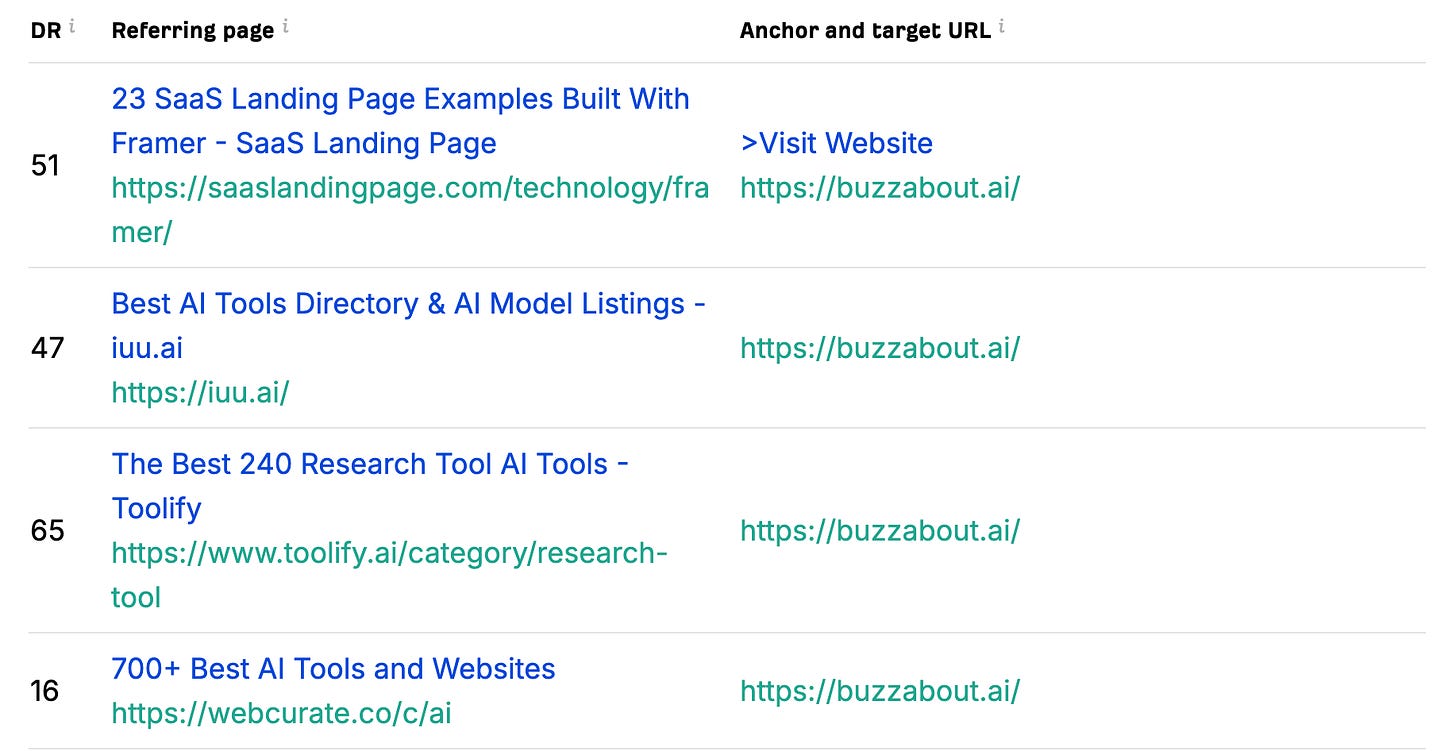
Digging deeper into their content efforts, I checked out buzzabout’s own resources and found they have a blog.
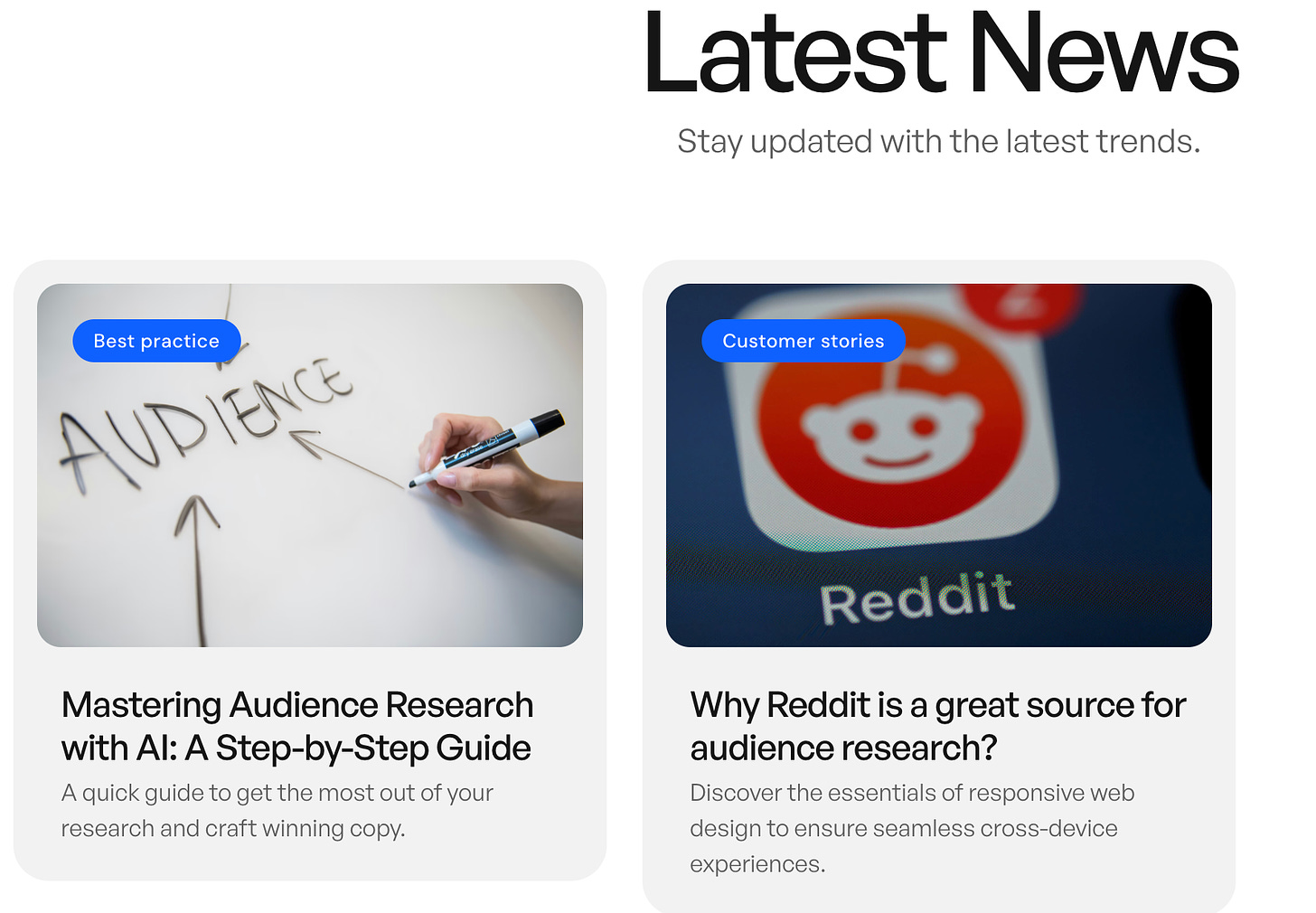
Their article, “Why Reddit is a Great Source for Audience Research”, caught my attention.
Unfortunately, it didn't come up in a quick Google search. However, as it addresses a common question in the customer journey, it is more than likely that it has been read.
💡 Sometimes you need to write an article even if the keyword you're trying to rank for doesn't show any searches when you check the search volume in a keyword tool. Trust your gut—if it aligns with your customer journey and answers questions your customer have, go for it.
In the past, I've ranked for “zero traffic” keywords that brought me a lot of quality traffic to the site. It’s a smart strategy to start with these low-hanging fruits.
Traffic Source: Product Hunt
Recently, buzzabout also launched successfully on Product Hunt, which likely boosted their visibility. They earned the badges '2nd Product of the Week' and '1st Product of the Day,' and received over 350 comments with overwhelmingly positive feedback (congrats to the team for making waves early on!).
💡 In discussions on Product Hunt threads like “What kind of traffic can you expect from a successful Product Hunt launch?” people commonly mention seeing an average of around 1,000+ visits and 150+ users who test the product.
So, this launch will surely increase visibility for their tool.
To sum up, here’s where the traffic is coming from & buzzabout is generating awareness:
Reddit
Community in which the target group lives
Google & articles in which they are mentioned
Product Hunt
Clear & On Point: Where the Traffic Lands
The Homepage
Now that buzzabout has traffic, let’s look where we land.
Their homepage serves as the main landing page, featuring a clear value proposition that outlines a desirable outcome for the target audience.
It also includes engaging elements that spark curiosity.

Also, the website itself answers the essential questions it should:
What is it?
Clear value proposition + explanation in the upper part when you land on the site.
Who is it for?
They highlight benefits for each target group.
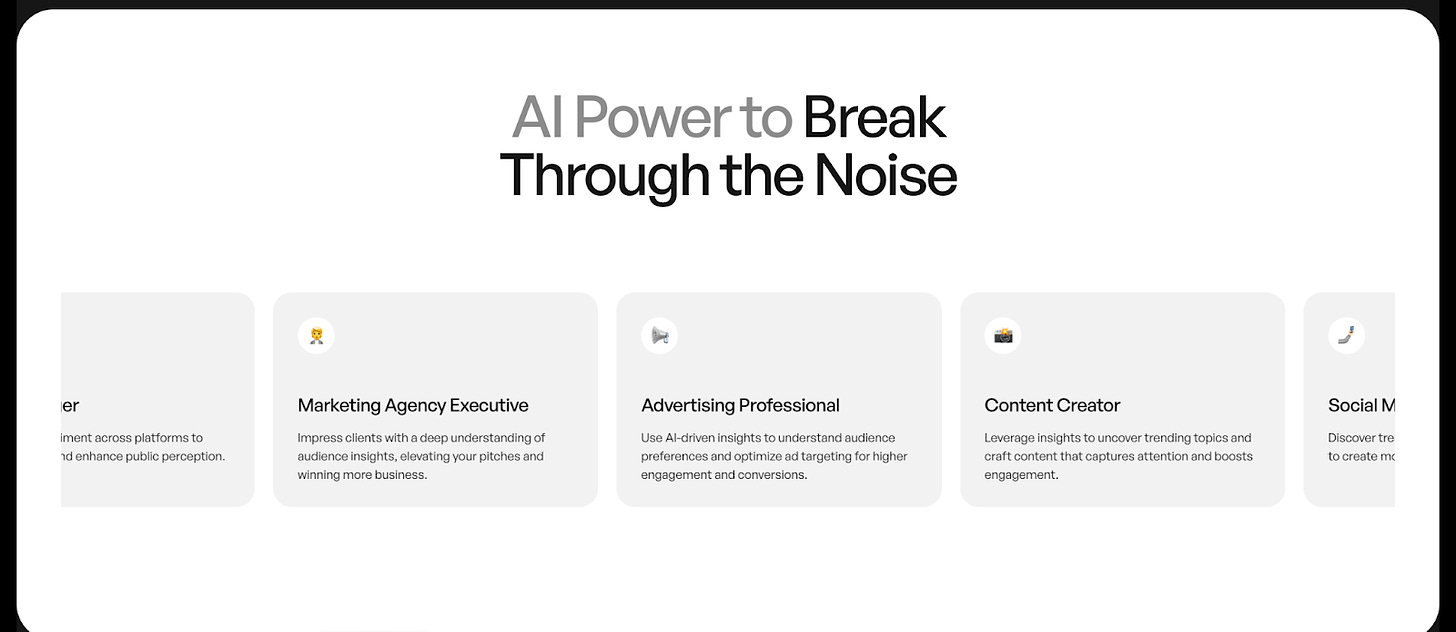
What do I get?
A smooth funnel entry point (I’ll discuss this below).
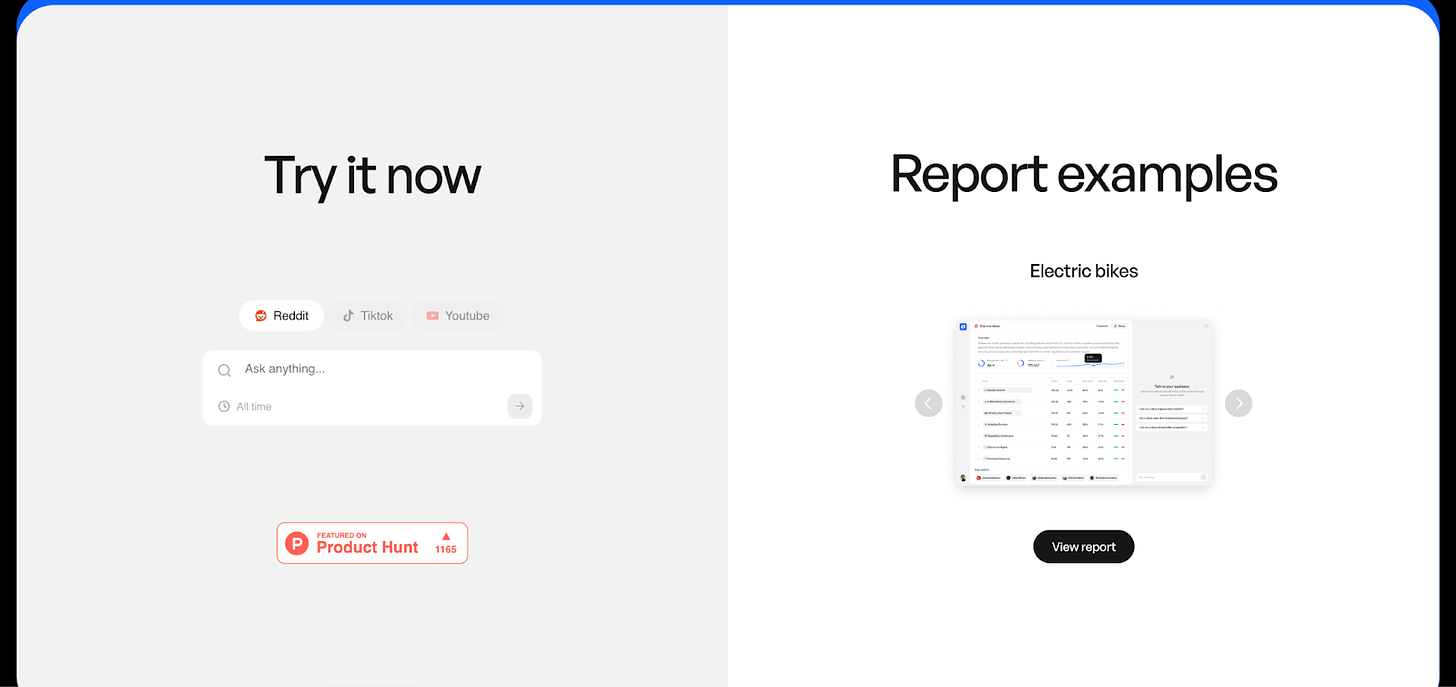
What to do next?
Clear calls to action like “Try for free” over the complete site.
Can I trust them?
This is the only area that could be improved. There are no case studies or customer testimonials yet - a simple fix would be showcasing Reddit or Product Hunt comments that they already have.
Before we continue, it would mean the world to me to have you on board for the next issues.
The Pricing Page
Their pricing page is clear and simple as well, answering all the essential questions.
I know what I’ll get from each package, and there is a reassuring note: “No credit card required. Cancel anytime.” Perfect.
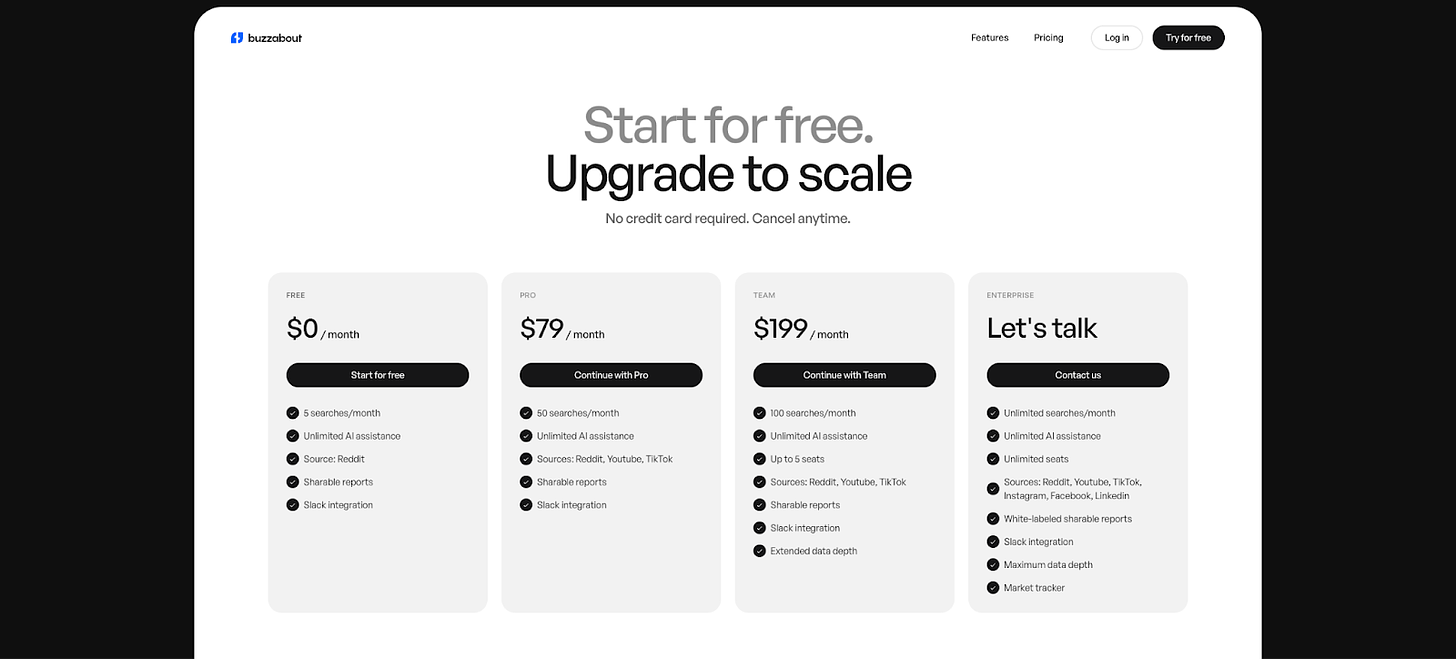
💡 As a relatively unknown startup, it’s essential to make it as easy as possible for new users to try your product. Avoid asking for credit card details or payment upfront.
I also appreciate the FAQs at the end of the pricing page, which answer additional questions, plus a “Contact us” button for when users are ready or have additional questions.
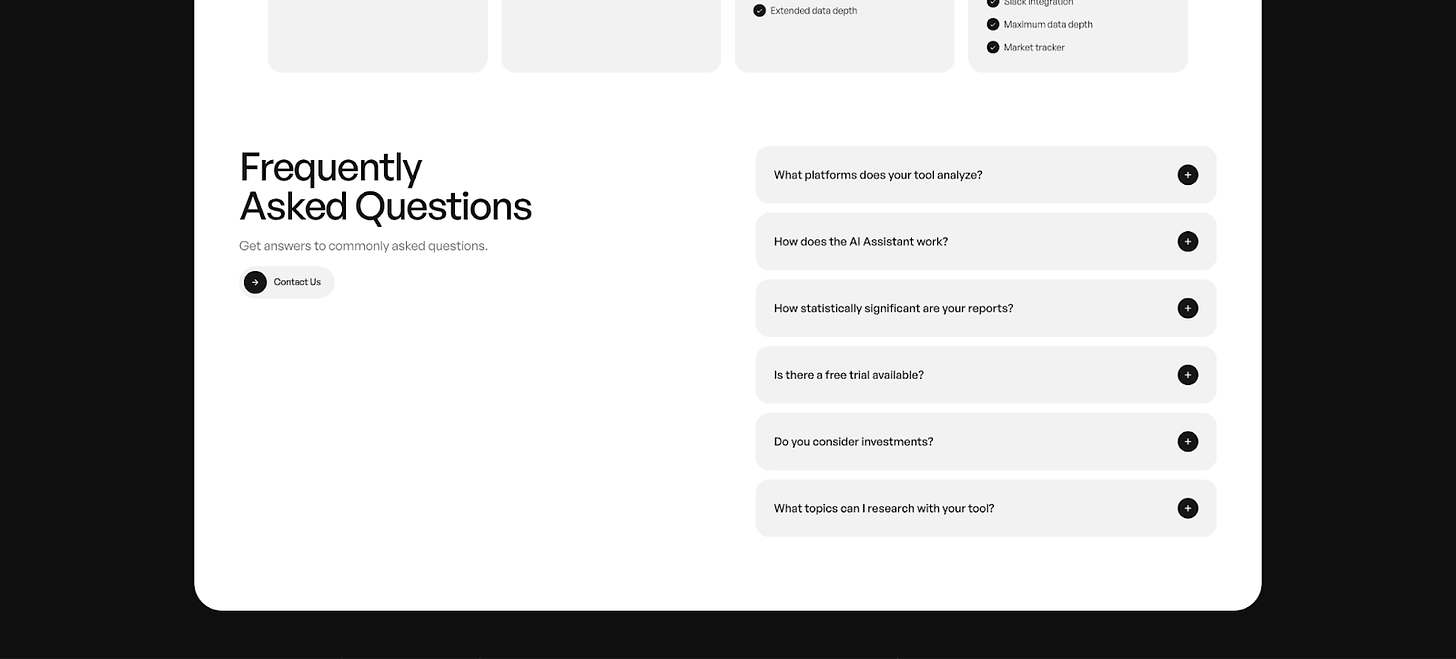
How to Capture Traffic as Easy as Possible - The Funnel Entry
But coming to the good part:
The funnel entry is what makes buzzabout stand out, and make people to talk about the solution on social media.
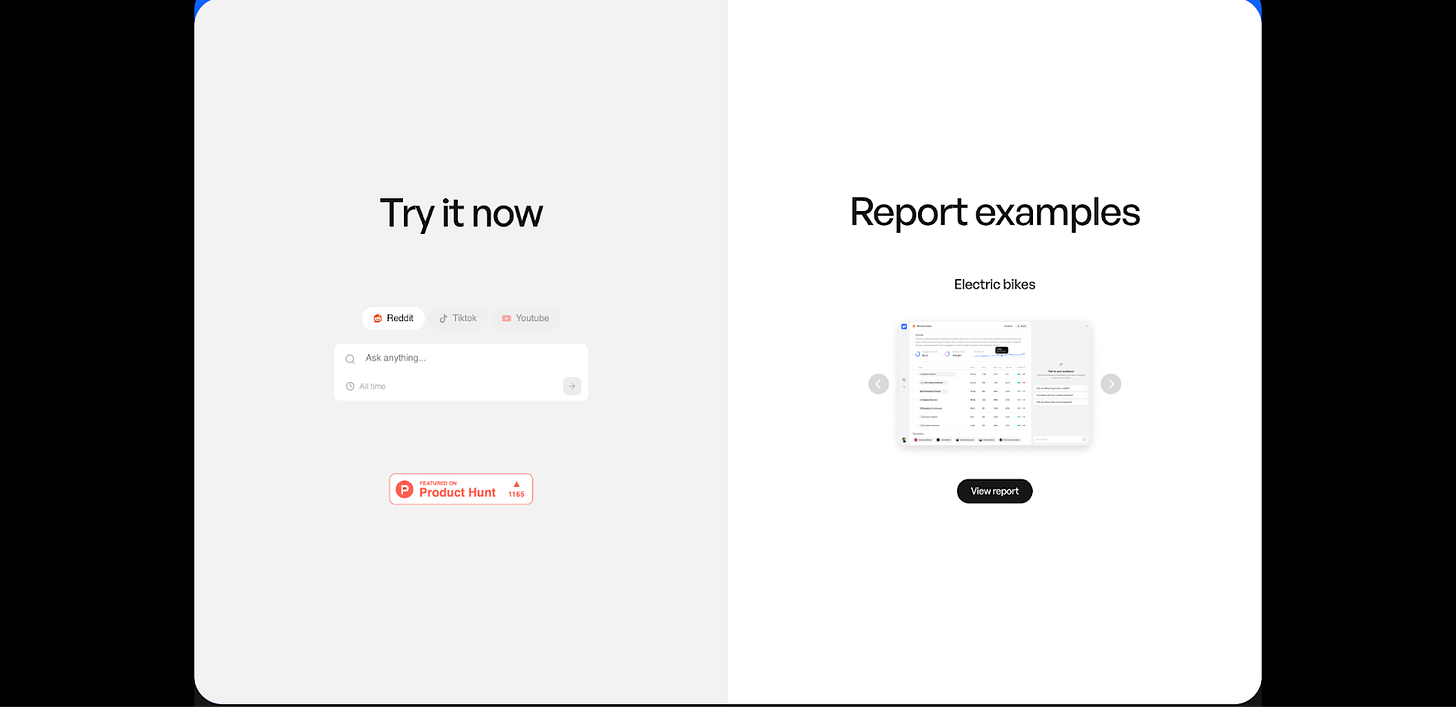
On their website you not only see an example of the tools outcome, but you can also try it for yourself - for FREE.
And this is pretty simple: Just type in a few words in a box on their website and get a full analysis of customer research on your topic and see what people are talking about.
This makes getting into their funnel as easy as possible.
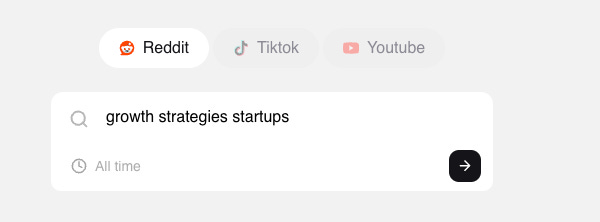
After entering your topic, you’re prompted to log in, with a Google authentication option that makes testing the tool easy and fast.
Once logged in, you receive a concise & detailed AI-generated summary and structured key insights.
And this is how funnels should look like in today’s digital age.
It is so easy and stupid get into the tool and gives so much value for free that you would feel stupid to not test it.
From Trial to Paying Customer - The Conversion
Now, with users in the funnel, let’s look at how buzzabout converts users into paying customers.
Buzzabout gives five free searches in the beginning to test the tool. To use it regularly or to expand your search to platforms like TikTok, you must upgrade.
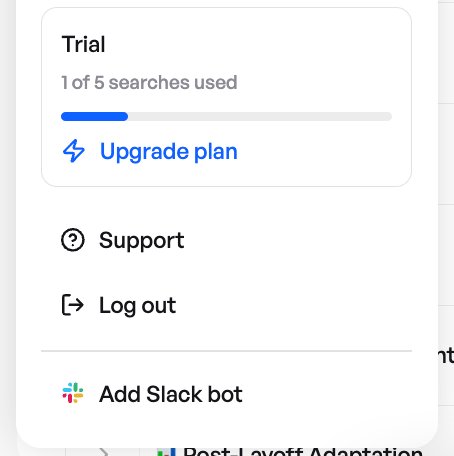
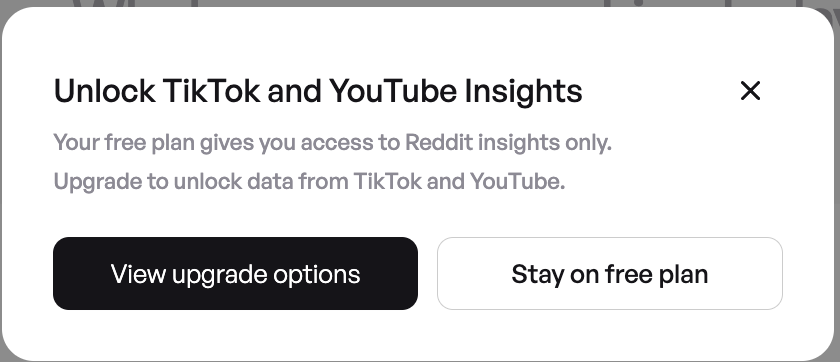
This could serve as a solid starting point for converting trial users into paying customers, especially as TikTok and YouTube are becoming some of the largest search engines.
💡 Like this visual from Adobe shows:
In other words, the intrinsic motivation for someone to pay for the solution is already there.
Buzzabout probably can convert a significant portion of users through smart email automations, trust-building nurturing campaigns, and well-crafted case studies.
That’s why I love the follow-up email after signup, which includes tips on using the tool - it’s valuable content without upselling.
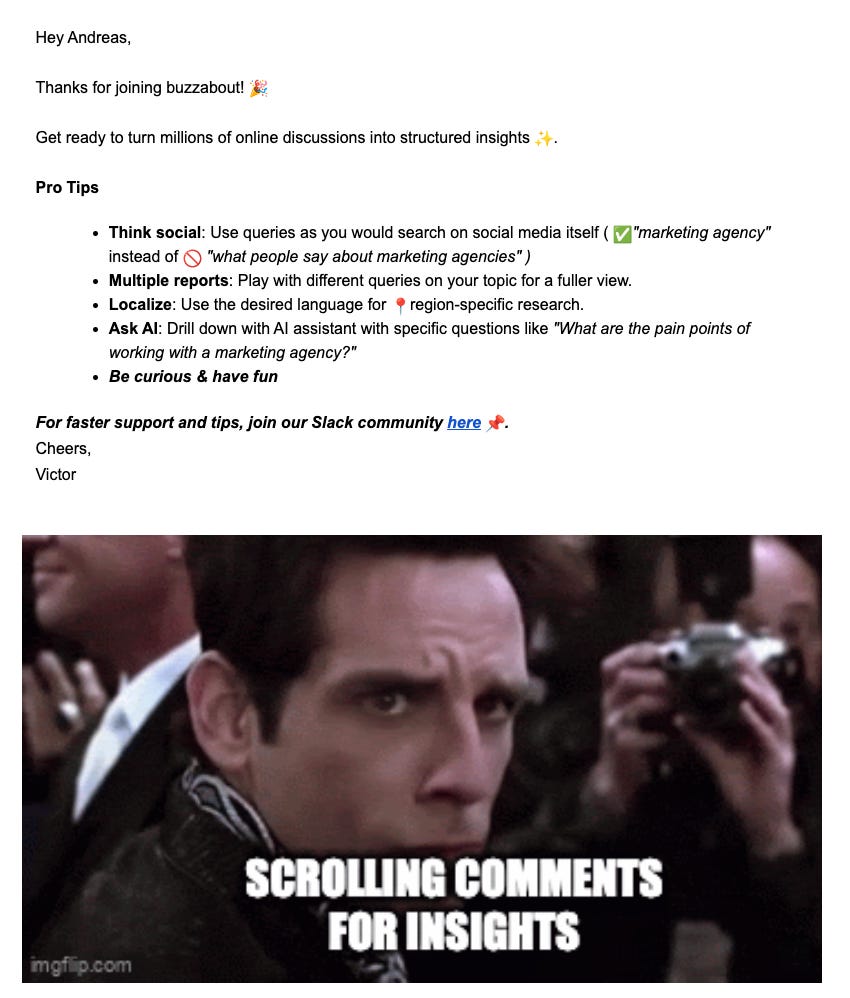
The email also invites users to a Slack community—a great way to foster user engagement and potentially convert more free users to paid customers due to intensive nurturing.
The only thing I would improve is the number of emails they send out. When I signed up, I got one email, but a few weeks later I heard nothing.
To stay consistent in the minds of your target audience, you should send emails regularly to really nurture them.
Final Thoughts
So, what buzzabout does well is create value with a free tool, drawing traffic and sparking conversation.
The funnel works like this:
Generate traffic through Reddit, community posts, and listicles that continue to drive traffic.
A well-structured website, clear pricing page, and targeted calls to action.
A simple funnel entry on the homepage with a tool that creates a lot of value.
Follow-up emails provide tips and encourage community engagement, leading to potential upsells.
Picturing as a whole:
Takeaways Your Startup Can Use
When creating a trial period make it so valuable it gets people talking, buzzabout does here an amazing job.
When you want to capture leads and build a funnel, make the entry as simple as possible - the box on buzzabout’s website is a great example.
Use Google authentication for quick logins.
Don’t ask for payment details upfront. Build trust first.
Use testimonials (buzzabout could improve here). They add credibility, making users more comfortable with a new solution.
Building a community around your solution is smart. When done well, it keeps users engaged and supports conversion.
That’s it for this issue. Happy growing Growth Builders!
Don’t forget to subscribe to not miss the next issue.


